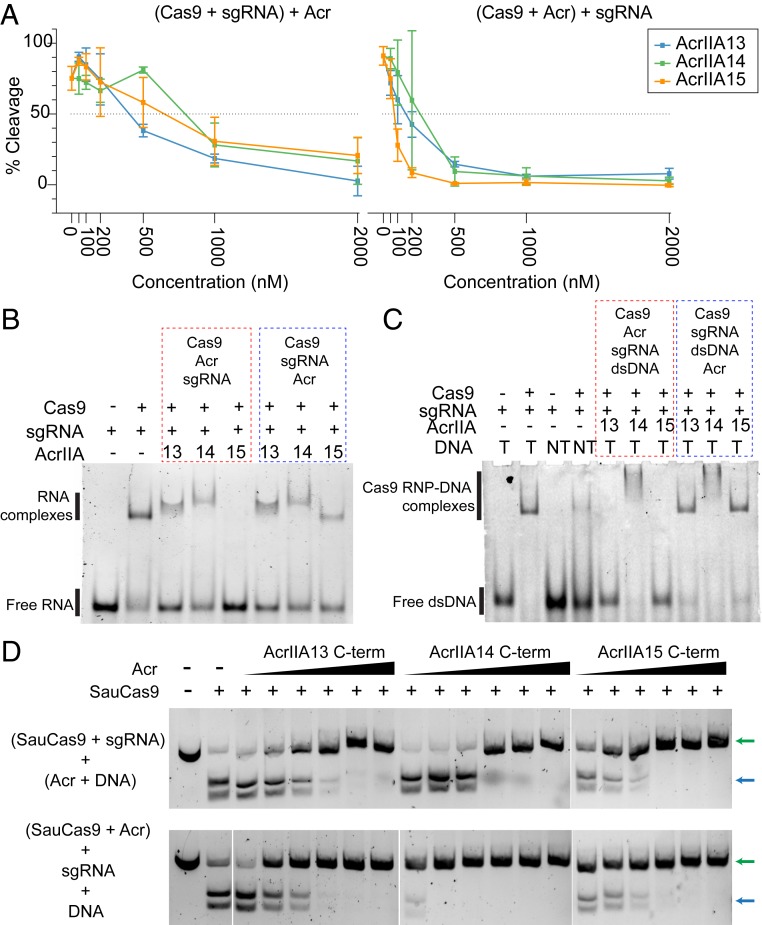Fig. 3.
Three SauCas9 inhibitors with distinct features and activities. (A) Plot showing inhibition of SauCas9 cleavage activity by AcrIIA13, AcrIIA14, and AcrIIA15 with %cleavage plotted on y axis and Acr concentration (nanomolar) on the x axis. (Left) Plot corresponding to the cleavage assays performed by first complexing Cas9 and sgRNA followed by addition of Acr and DNA. (Right) Plot corresponding to the cleavage assays performed by first complexing Cas9 with Acrs followed by the addition of sgRNA and target dsDNA. The plotted data are the average %cleavage activity from three independent replicates. Error bars represent average ± SD. (B) Six percent polyacrylamide gel showing formation of Cas9-sgRNA RNP in the presence and absence of different Acrs. Lanes boxed in red represent reactions where Acrs were added before the addition of sgRNA. Lanes boxed in blue represent reactions where Acrs were added after the addition of sgRNA. Order of the addition of different reaction components are shown above the boxes. (C) Six percent polyacrylamide gel showing binding of Cas9-sgRNA RNP to either target DNA (T) or nontarget DNA (NT) in the presence and absence of different Acrs. Lanes boxed in red represent reactions where Acrs were added to Cas9 before the addition of sgRNA and dsDNA. Lanes boxed in blue represent reactions where Acrs were added after the addition of dsDNA to Cas9-sgRNA RNP. Order of the addition of different reaction components are shown above the boxes. (D) Agarose gels showing cleavage of dsDNA target by SauCas9 in the presence of increasing amounts of each Acr with the N terminus removed. Reactions were performed by adding Acrs after complexing Cas9 and sgRNA (Top) or prior to the addition of sgRNA (Bottom), as indicated to the Left of each panel. Each reaction contains 5 nM dsDNA, 100 nM SauCas9, 100 nM sgRNA, and the following Acr concentrations: 50 nM, 100 nM, 200 nM, 500 nM, 1,000 nM, and 2,000 nM. Uncleaved and cleaved dsDNA products are indicated by green and blue arrows, respectively.

